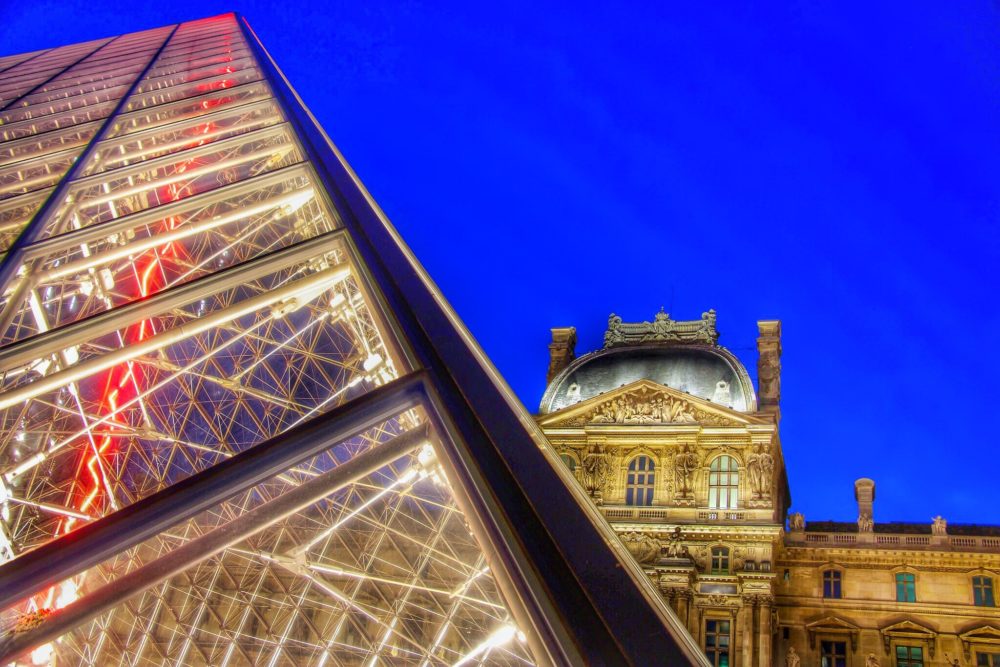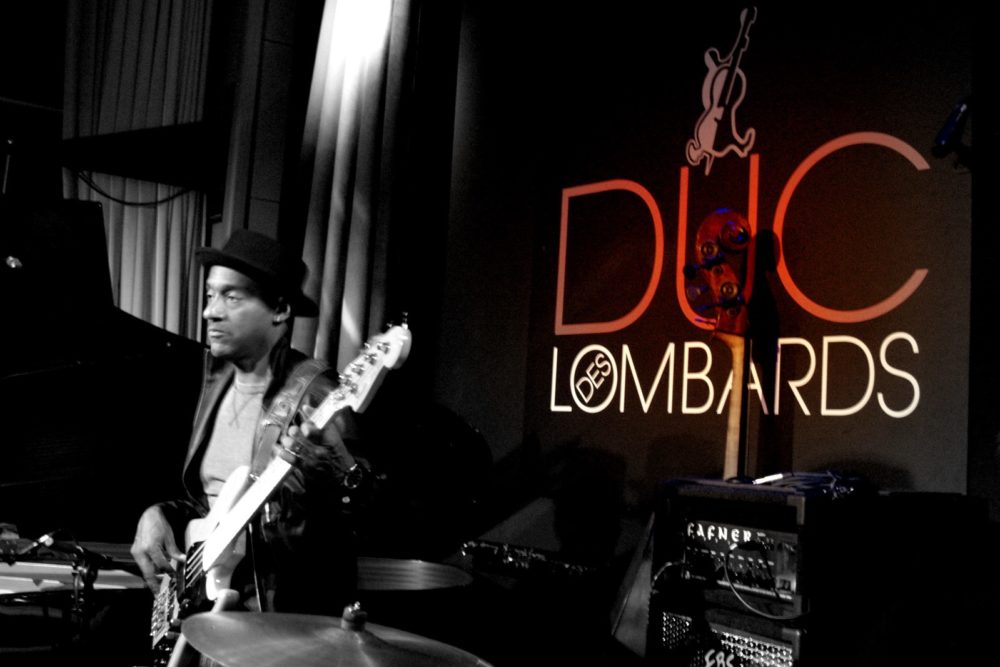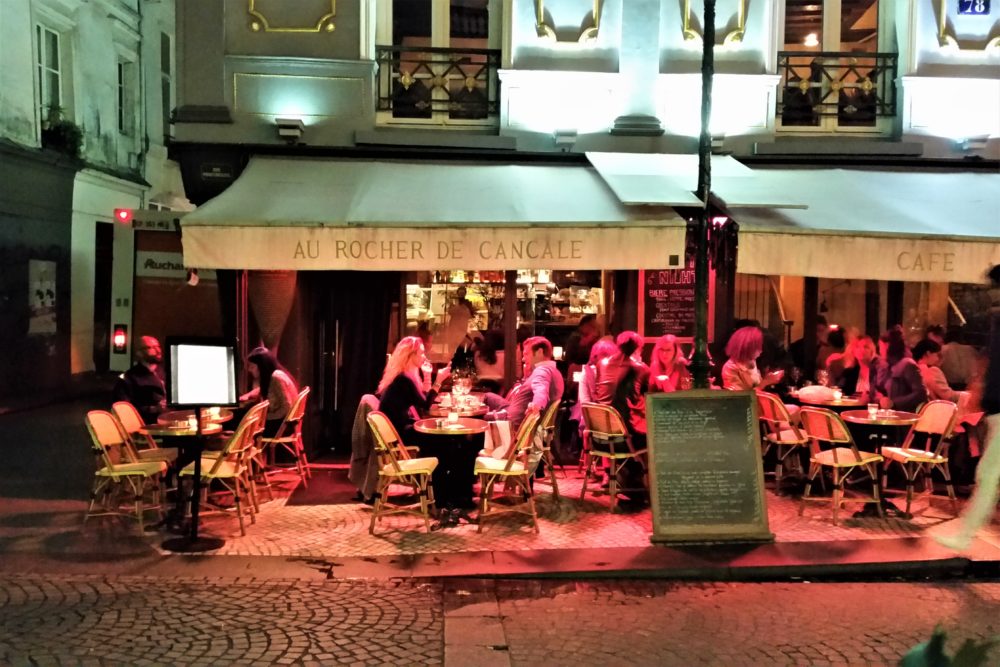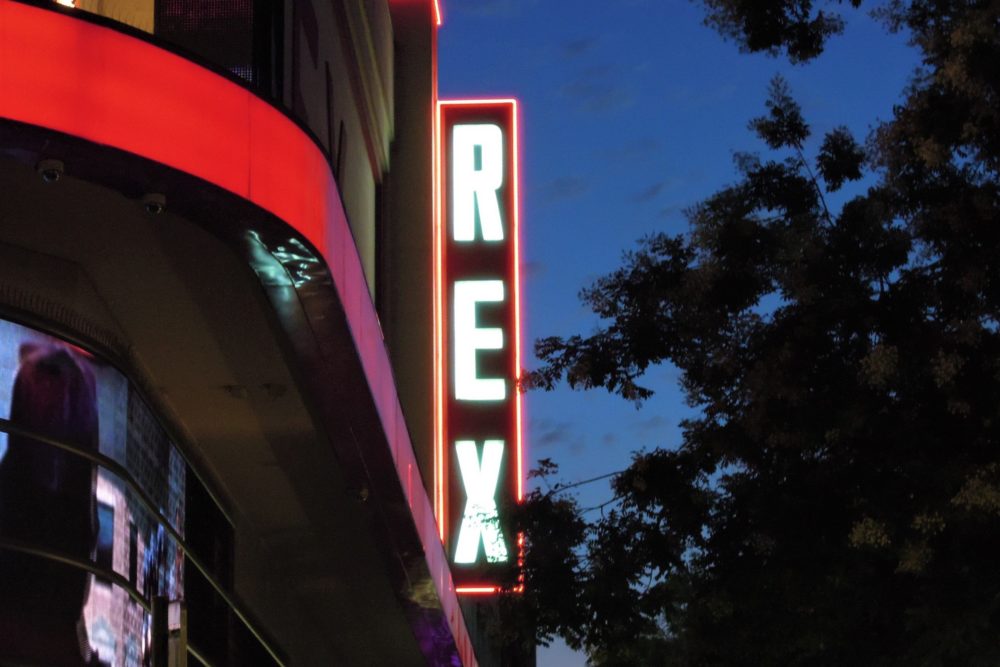Heavyweights in historic as well as cultural heritage, the Louvre and Les Halles districts are young and dynamic, and offer an array of experiences that dizzy the senses.

Musée du Louvre (Photo: Alyssa BLACK via Flickr / CC BY-SA 2.0)
Dubbed “the belly of Paris” by French scribe Emile Zola, Les Halles was once a hotbed of trade and debauchery. Its ancient marketplace – now superseded by the glass-roofed underground complex, Forum des Halles – was the kernel of Paris’s commercial activities until the early ‘70s. Though that bygone era has long passed, the original market’s buzzy ambience can still be felt in and around Rue Montergueil where a bundle of restaurants and bistros serve everything from haute cuisine to hearty cassoulet.
Art and shopping are a big draw in Les Halles. Centre Pomidou’s high-tech glass and steel superstructure sits smack-bag-centre in the Beaubourg neighbourhood (with the Louvre in close proximity), and the constellation of cobblestone lanes in its surrounds swell with fashion boutiques where eager-eyed fashionistas comb the racks. Round-the-clock night-life comes in the form of laid-back jazz joints and booming dance clubs.
Things to do
Housing the largest collection of modern art in Europe, Centre Pompidou (Place Georges Pompidou) could be mistaken for a 1960s industrial chemical factory – albeit an uber stylish one. With exposed steel work and colourful piping forming the building’s external façade, it strikes an unmistakable pose on Paris’s visual geography. Since its debut in 1977, this unique six-level doyen of the arts has wowed the world’s art lovers in their droves. Its galaxies of space contain huge galleries, workshop and performance areas, a bibliotheque, cinemas, as well as the rich vista-giving restaurant Georges at its apex.

Centre Pompidou (Photo: Booking.com)
The shining star in Paris’ art museums, Musée de Louvre’s (Rue de Rivoli) rambling grounds and palaces attracted an incredible 9.6 million visitors in 2019. Showcasing 35,000 works of art that span from ancient to contemporary times, its ever-evolving collection of masterpieces and artefacts are displayed in eight different departments, spread among three wings – Denon, Sully and Richelieu.
The master in its canon – Leonardo Da Vinci’s Mona Lisa – is housed on the first floor behind bullet proof glass. A bastion of age-old to cutting-edge innovation, the Louvre is the ultimate tribute to art, knowledge and culture the world over.
59 Rivoli (59 Rue de Rivoli) is no ordinary art gallery. Free of charge, this formerly-deserted-Haussmann-building-turned artists’ squat will take you on a six-storey journey that takes in a riot of art styles and forms, by artists who exhibit their work in a judgement-free environment.
For Parisians, the new ‘canopy’ style aesthetic of Forum des Halles (101 Porte Berger) is a matter of much conjecture – they either love it or hate it. Nevertheless, 150,000 shoppers a day make a bee-line for this three-tiered assemblage of big-brand outlets, making it Paris’s busiest shopping hotspot. From home décor to street fashion, organic beauty care to luxury jewellery, no stone is left unturned. Vintage fashion hawks should satisfy their cravings on the Rue de la Verrerie, where off-beat boutiques such as Free’P’Star (61 rue de la Verrerie) and Kilo Shop (65 Rue de la Verrerie) bulge with all things retro and funky.
After a day treading Louvre & Les Halles’ many winding streets, unwind within the tranquil, revitalising environs of Nuxe Spa (32-34 Rue Montorgueil). Under vaulted stone ceilings (remnants of its former life as a 17th-century wine cellar), Nuxe offers a variety of ways to sooth the soul. Replete with whirlpools and massage suites, let the masseuse’s magic hands put a bounce back in your step.
Paris is a serious jazz town, and some of the best local and international players pass through Rue des Lombards, a street harbouring a trio of great jazz clubs. Watch the notes fly at the low-key Le Baiser Salé (58 Rue des Lombards) or Sunside Sunset (60 Rue des Lombards), or for a bit more star power, check out Duc des Lombards (42 Rue des Lombards).

Marcus Miller at Duc des Lombards Jazz Club (Photo: Philippe Agnifili via Flickr / CC BY-ND 2.0)
Where to stay
Set in one of the prime spots for shopping in Paris, Novotel Paris Les Halles (8 Place Marguerite de Navarre) offers its residents easy access to a diverse range of shops, galleries and museums in the nearby districts of Rue de Rivoli, Boulevard Haussmann or Rue du Faubourg Saint-Honoré. The hotel has a spacious and stylish reception. The bar area is decked out in modern décor, and is flanked by a leafy and discreetly lit courtyard with a glowing serenity.
A few minutes stroll from the Centre Gorges Pompidou, Hôtel Le Relais des Halles (26 Rue Pierre Lescot) sits on a pedestrianised area amidst a generous offering of enticing boutiques, bars and restaurants. The hotel has easy access to a multitude of central Paris Metro stations which will whisk you off in any direction you choose. It’s small, warm and welcoming rooms are air-conditioned and have clean and fresh, antique-styled decoration.
A skip away from the Musée du Louvre and Jardin de Tuileries, the Grand Hôtel du Palais Royal (4 Rue de Valois) is situated in the beating heart of Les Halles. Fresh vanilla aroma permeates the air as you walk through this regal 18th century building. Its unique features jump out at you immediately; bronze figurative sculptures and extravagant works of art, a luxurious spa and Turkish bath by Carita, and a warm and intimate bar.
Eat & Drink
Edging north from Les Halles, Rue Montorgueil is a colourful pedestrianised strip full of Parisian character. Among the glut of bars and restaurants, and hip and edgy streetwear boutiques, lies one of the city’s oldest shops, the Pâtisserie Storher (51 Rue Montorgueil), which dates back to 1730.
Other notable historical establishments are Au Rocher de Cancale (78 Rue Montorgueil), a bar-restaurant with a striking blue and gold fascia that welcomed Parisian litterati such as Honoré de Balzac, and L’Escargot (38 Rue Montorgueil), which offers its namesake, along with sumptuous Chateaubriand steak and Béarnaise sauce, veal sweetbreads and whisky-flambéed lobster. Also a spot where Marcel Proust was a frequent visitor.

Rue Montorgueil (Photo: Daviddje via Flickr / CC BY 2.0)
Dans Le Noir? [In the Dark?] (51 Rue Quincampoix) started in Paris in 2004 and has since been serving up delicious surprise meals as its name suggests – in total darkness. This unique concept takes diners on a multi-sensory journey guided by partially blind or blind waiters. Waiters help navigate you through your meal – of which you have no idea of the ingredients – causing you to rediscover your senses through textures, aromas and tastes.
Le Tambour (41 Rue Montmartre), a magnet for hungry night owls, serves up food til 3:30am. It has somewhat of an eccentric atmosphere: a hodge-podge of street signs, and nautical and astronautical paraphernalia line the walls. Food here is earthy and beautifully cooked. At any hour of the day or night you can tuck into succulent entrecôte (rib steak) with onion sauce, steak tartare (raw ground beef with onion, capers and seasonings), or the outstanding cassoulet (slow cooked casserole from the south with meat, pork skin and white beans). Be sure to take advantage of the bottles of wine à la ficelle (you pay only for what you drink).
If spritely, fun-loving bar tenders who pack a mean mojito or caipirinha bring a smile to your face, then look no further than Café Noir (65 Rue Montmartre). Set in the garment district of Sentier, this funky, anything-goes bar, with papier mâché models hanging from its lofty ceilings and retro Parisian memorabilia splashed across its walls, is a magnet for local artists, trendies and the after-work crowd. Its mix of French and Anglophone devotees give the place a laid-back, bubbly ambiance. Weekends see Parisian DJs take things up a notch by spinning a mix of lo-fi house and obscure beats – prepping the party crowd for the clubs that pepper the surrounding area.

The Rex Club (Photo: Gareth Jones for Travelmag)
Le Klub (14 Rue Saint Denis) prides itself on its eclectic music policy. Hosting fantastic alternative dance nights that range from electro, house and techno, alongside hip-hop, metal and garage, this underground Parisian music haunt is a two-level basement affair. Its cavernous bare-stone interior, colourful lighting and crisp sound system make this a great place to throw your inhibitions to the wind and let the good times roll.
Shining high in the Paris sky, Le Grand Rex cinema is an Art-Deco jewel, and attached is the Rex Club (5 Boulevard Poissonière). Often associated with French techno giant Laurent Garnier, the Rex has long been the preserve of the world’s most celebrated house and techno turntablists. Here, you’ll find Paris’s true dance music pilgrims who have zero interest in how good you look, and live strictly for the rhythm.